Prepping a Summer Emergency Kit
It’s time to gear up for road trip season! Whether you are headed to the coast, on a cross-country road trip, or you’re off to the grocery store to prepare for a “staycation” at home, it’s always a good idea to have your car prepped with an emergency kit. When it comes to your car, the unexpected is bound to happen. Good drivers know this, embrace it and are prepared for anything that’s thrown their way!
While you may not be able to prepare for all scenarios, there are a few good measures you can take to make sure if a break down occurs, you and your family are safe. A fully-stocked emergency kit is a simple way to prepare for the unexpected. While some articles recommend stocking your kit with every item under the sun, we are just going to cover a few key items which will help your situation be a bit more manageable.
 ...[more]
...[more]
So You Get A Flat Tire...What Now?
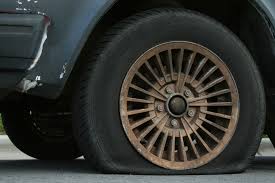 Nobody ever looks forward to a flat tire, and nobody ever says "well, that was a really good time" after having one. You can at least minimize the damage to your tire and danger to yourself, though.
Nobody ever looks forward to a flat tire, and nobody ever says "well, that was a really good time" after having one. You can at least minimize the damage to your tire and danger to yourself, though.
Flats vs Blowouts
If you get a blowout, you'll know about it right away. Sometimes the tire can fail dramatically, with a bang as loud as a shotgun going off. Other times, it might just be a loss of air and a sudden change in your car's handling, followed by vibration, noise and a pull to one side. If it's a front tire that fails, your car might be a real handful to drive until you can get to a stop.
In either case, your first job is to pull off the road as quickly (but safely!) as you can. Don't jam on the brakes or make any sudden mo ...[more]
Self-Inflating Tires…Soon To Be A Reality?
Driving around on underinflated tires is just a bad idea all the way around. Underinflated tires increase a car’s rolling resistance, meaning a drop in fuel efficiency since it takes more energy to move the vehicle down the road.
A single tire that’s down by ten pounds of air means a 3.3 percent drop in fuel economy…multiply that by all four tires, and you can figure on giving up ten percent of your gas mileage. The added friction and rolling resistance also means more heat is generated, and heat is the enemy of the internal structure of a tire. That heat will damage a tire to the point of failure. Studies show that underinflated tires are a full 25 percent more likely to fail, and at least half of one-car accidents involve a tire problem as a factor. And still, it’s estimated ...[more]
Winter Tires – Yea or Nay?
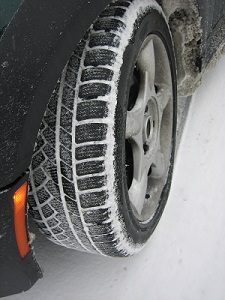
The Holidays Are Coming – Is Your Vehicle Ready?
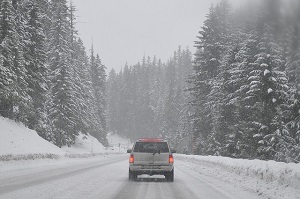
Winter Tires? Or All-Season Tires?

Winter is Coming

9 Tips for your Spring Vehicle Checkup
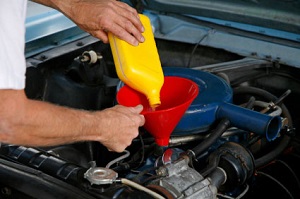 The temperatures are inching upward, the days are getting longer and the first buds are starting to appear on the trees. Spring is on its way, and soon it’s going to be time to do a little preventive maintenance on your ride. No need to dread it -- it’s all pretty routine stuff!
The temperatures are inching upward, the days are getting longer and the first buds are starting to appear on the trees. Spring is on its way, and soon it’s going to be time to do a little preventive maintenance on your ride. No need to dread it -- it’s all pretty routine stuff!
- Air filter - If you haven’t changed your air filter since last year (or can’t remember when you changed it at all), it might be time. It’s an easy and cheap fix, and it pays off in your vehicle’s performance and fuel economy.
- Cabin filter - Older vehicles often don’t have a cabin filter, but it can make a lot of difference in how pleasant your vehicle is to drive. Stale, smelly air? Change it!
- Wipers -- Get a good look at them. Are they showing signs ...[more]
Potholes...A Sign It’s Spring
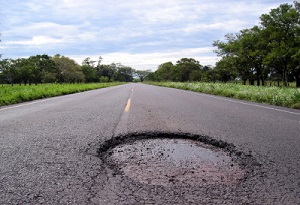 Nobody needs to remind you this has been an especially harsh winter.
Nobody needs to remind you this has been an especially harsh winter.
Winter is not just hard on vehicles and the people who drive them -- it’s hard on roads, too. With fluctuations in temperature and freeze/thaw cycles, pavement materials expand and contract, leaving streets with cracks and potholes. Add in the effect of washouts from heavy rain, caustic de-icing chemicals and damage from vehicles with studs or tire chains, and you can end up with springtime road surfaces which are a real mess.
Unfortunately, you can’t wait for the highway department to repair damaged pavement...you’ve got to get where you’re going, and your car’s tires, suspension and alignment are likely to pay the price. A hard impact on a pothole can be enough to tweak your front end ali ...[more]
Five Tips for Thanksgiving Travel
 1. Tires: Ensure tire pressure is properly serviced and maintained for both lengthy travels and everyday driving. Underinflation of tires can cause unnecessary wear and hardship to tire tread, causing tire failure or malfunctions. If not properly inflated, fuel economy can be severely decreased, causing drivers to lose about .6 miles per gallon due to improper tire conditions. Whether over or under inflated, tires can easily lose traction that could lead to an accident if not addressed. Service tires before Thanksgiving travel this holiday season to avoid unnecessary accidents, injury or inconvenience.
1. Tires: Ensure tire pressure is properly serviced and maintained for both lengthy travels and everyday driving. Underinflation of tires can cause unnecessary wear and hardship to tire tread, causing tire failure or malfunctions. If not properly inflated, fuel economy can be severely decreased, causing drivers to lose about .6 miles per gallon due to improper tire conditions. Whether over or under inflated, tires can easily lose traction that could lead to an accident if not addressed. Service tires before Thanksgiving travel this holiday season to avoid unnecessary accidents, injury or inconvenience.| 12 | Next >> |



